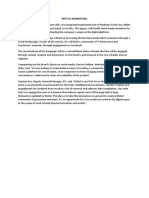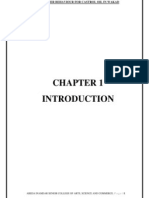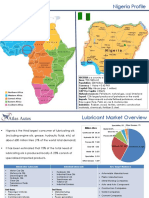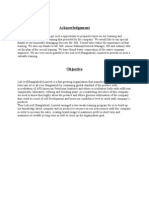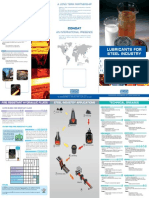Lubricant Market Globe Vs India
Lubricant Market Globe Vs India
Uploaded by
Sandeep WalkeCopyright:
Available Formats
Lubricant Market Globe Vs India
Lubricant Market Globe Vs India
Uploaded by
Sandeep WalkeOriginal Title
Copyright
Available Formats
Share this document
Did you find this document useful?
Is this content inappropriate?
Copyright:
Available Formats
Lubricant Market Globe Vs India
Lubricant Market Globe Vs India
Uploaded by
Sandeep WalkeCopyright:
Available Formats
Market Analysis Globe Vs India
Around 45 Million Automotive 51 %,
MN. Industrial 41%, Balance
Marine . Globally Rate of Growth 2-2.5% per annually ( Last Five Year ). Developed Countries only 1 % per annually slower growth rate in Automotive Lubricants duo to saturation of Veichel Population, High engine performance, high quality of oils. Scope in Developing Countries .
Region Wise Demand
Asia Pacific (25 %) Europe (35%) North America(28%) Central South America(12%)
Asia , Third Largest Market , Growing at Faster Rate. Per Capita Consumption for Countries as Below . India :1% America :31 % China :2% Europe :14%
Seventh Largest Market In world. Sixth Largest Market in Automotive Lubricants. India Sales Vs Value: 1.75 MMT Vs Rs.11,375/- cr 45 MMT /
.( 2008-2009 ). Vs
48Billion UDS Globe
1.75 MMT , lubricants produced by the organized sector; large, midsized as well small scale companies. This does not include branded base oil, transformer oils as well as sizable amounts of rerefined and spurious lubricants sales produced by un- organised sector
Lubricant
industry in India is broadly divided into 3 major markets sectors: Automotive, industrial and marine & Energy applications. Ratio of automotive to industrial lubricants is approximately 63:37. Major share of products wise is Auto Engine Oils, Auto Gear Oils, Auto Greases, Turbine Oils, Hydraulic & Circulating oils etc.
35 30 25 20 15 10 5 0
Sales
IOC 34% HPCL 18% BPCL 8 % IBP 2 % CASTROL 19%
Sales GULF OIL 6% TIDE WATER 4% ELF 3% OTHERS 6%
About 1200 manufacturers of various grades of lubricants & allied products in organized sector out of which about 1150 are in small & medium sector. The estimated total installed capacity of these units is about 2.2 million MT and capacities are being continuously augmented
The automotive industry saw very good growth in 2010. The growth was across categories ,with the passenger vehicles segment growing by over 29% and the commercial vehicles segment growing by 28%. It is believed this upward trend will be sustained in the foreseeable future due to a strong domestic market and increased thrust on exports. The luxury car segment has taken off substantially in the last three years and current data suggests demand will be sustained in the long term. Additionally, the automobile industry is yet to fully tap into demand from rural areas but most Original Equipment Manufacturers (OEMs) are targeting the rural customer and there has been a gradual but steady growth in demand for passenger vehicles from these areas. Rural markets and the luxury car segment are expected to play a significant role as the Indian automobile industry seeks to double total sales over the next decade. India is truly emerging as a global hub for compact cars with almost every OEM want have a presence in this segment. Interestingly for Castrol, its global partners Ford and Volkswagen successfully launched their small car offerings Figo and Polo in the Indian market. Castrol extended its strong partnerships with leading automotive OEMs by tying up with Skoda India. This tie up will benefit the synthetic segment of our portfolio. With more global OEMs coming into India, this trend presents us with strong partnership opportunities in 2011 and beyond.
By
Sandeep Walke
The Background These are exciting times for the lube industry in India. Each one of the vast contingent of 22 Multinationals and a total of 80 big & small players are vying for a pie of Rs.5,500 Crore market. Worldwide established brands,some of them albeit new to India, like Shell, Mobil, Caltex, Elf, Pennzoil are fighting it out with established Indian brands like SERVO & others to establish their foothold in the 6th largest lubricant market in the World. Compared to the average World consumption of 35 Million tonnes per annum & Asia-Pacific region consumption of 7.5 million tones, the Indian lube industry with annual demand of 1 million tonnes is just behind Japan and China in Asia having a demand growth rate of 4% compared to the World growth rate ranging between zero to 2%. That is the lube industry in India today. Prior to 1992 the lube industry in India was controlled by the 4 major Public Sector Oil companies namely Indian Oil, HPC,BPC & IBP and a handful of private companies like Castrol, Gulf, Tidewater & others. With the distribution & canalisation of base oil import being controlled by the Government of India, the PSU Oil Companies controlled 90% of the market share. The decanalisation of the lube base oil imports in 1993 by the Govt. of India followed by reduction of import duty on lube base oils from 85% to 30% and gradual scrapping of administered pricing observed the announcement of almost a new lube venture every month during 1994. Most of the new entrants formed associations with Indian companies both in the Private & Public sectors. All these new entrants are targeting for a very small share of the market considering that even 1% market share means a sale of Rs.55 Crores. The Indian Oil controlled 54% of the lube market out of total PSU's market share of more than 90% during 91-92. The Government policy of deregulation followed by entry of multinationals through JVCs had its effect on the market dominance of PSUs. This has been followed by sudden entry of lot many players, each one claiming to have some international collaboration and a `foreign' brand name.This had its initial impact and illusions in the market and the market became more volatile. During these phases marketing channels of distribution had drifted from petrol stations to bazaar trade.
The
Marketing Channels The marketing channels for automotive lubricants in India consist of the following, Petrol Stations Wholesale Distributors Lube Oil Shops Auto Spare Shops Authorised Service Stations Garages Rural & Agricultural dealers Super Markets
Till recently, the Indian consumers linked filling of lubricants to that of petrol & diesel in petrol stations. With the advent of deregulated market scenario & fierce competition, efforts are being made to position lubricant as a high involvement consumer goods. Hence, the resultant drift towards the bazaar trade i.e., outside the petrol stations. The sales of automotive lubricants through bazaar trade increased from a mere 10% prior to 1993 to a handsome present level of 40% compared to Worldwide Trend of more than 70%.In the developed World, because of high degree of customer sensitivity & awareness, D0-it-Yourself (DIY) concept has evolved for filling of engine oil. People buy from super markets & fill it themselves. In India, this job is still left to the mechanics & service stations .During these years this shift in trade had the following effects: Decline in Market Share of PSU oil companies. Market became heavily crowded & the industry got transformed into FMCG. Dumping of products in the bazaar. War of trade discounts resulting in rice war & lesser margins for dealers. Entry of spurious lubricants.
Tie Up with OEMs Among the PSU Oil Companies Indian Oil is one company who has all along given utmost importance on tie ups with Original Equipment Manufactures (OEMs) after signing agreements with major OEMs like Maruti Udyog Ltd,TELCO, Bajaj Auto, Kinetic Engineering,SKODA etc. Even initial fill & warranty fill agreements were also signed with TELCO & Hindustan Motors. In fact, the Japanese vehicle manufacturers prefer to tie up with one or two major oil manufacturers for use of engine oils as `Genuine Spare Part' of the vehicle whereas the American vehicle manufacturers prefer to follow the American Petroleum Institute who defines the performance parameters of engine oils. The Indian vehicle manufacturers follow a route which is combination of both. These inner strengths of PSUs and the quality policy adopted by them, even attracted major multinational players like Shell, Mobil, Exxon & Caltex to enter into tie up with one or the other PSU to have access to their well established marketing network.
Strategic Business Plan The PSUs initially could not resist the onslaught of dumping in bazaar channels and illusions created by FMCG practices but off late started regaining their lost ground and to some extent restrict & arrest their decline from a level as high at 90% to 65%. In this front Indian Oil after emerging as India's largest commercial organisation and being the only company in the country to feature in the Fortune Global 500 listing has adopted structured business plan approach to strike a balance between conventional marketing channels (petrol stations)/distribution network and parallel marketing channels (bazaar trade). The parallel marketing channels chosen by the Company also adopted the path of brand image, customer focus & customer accountability by way of putting up SERVO Premium Lube Shops in the bazaar trade. The petrol stations are also simultaneously undergoing major facelifts through implementation of the companies Vision-2000 modernisation plan. By way of this modernisation the customers will get the opportunity to pick up all their convenience stores in the `Convenio' (departmental store ) put up at the petrol stations while filling up petrol, diesel & lubricants.
IOC is also in the process of establishing certain strategically located modern petrol stations on the highways where apart from all way side amenities like motel, dhaba, restaurant, amusement parks, toilets, car parking slots, wash rooms, communication facilities (STD/ISD,E-mail) etc. also service & repair shops of major OEMs of the country will be put up to facilitate quality services at right price. The concept being developed in the Golden Jubilee year of India's independence,these outlets will be christened `Jubilee Outlets'. The coming years will ensure availability of more effective & customer friendly channel of distribution and will have its impact in the long run on the short terms strategy presently being practised in the automotive lubricant market. The strength of a marketing company more so in the field of specialised lubricants definitely lies in their access to superior technology base. This is more so because the automotive sector is undergoing a major technology upgradation programme with entry of reputed international automobile manufacturers in the market. Moreover, stringent emission norms & eco-friendly devices are taking over old practices which will necessitate improvement in performance of lubricating oils. Such challenges can not be encountered with only technological collaborations but also input resourcing. Consistency of inputs and sound infrastructural base will play a significant role to combat competition. The thrust in the coming years will be more on adopting to Indian market & Indian road conditions and thereby it will be essential to develop indigenous lubricants technology keeping pace with international standards
Strength of an Oil Company Manufacturing of quality lubricants is guided by two important parameters i.e, resourcing of consistent premium quality base oils and incorporation of cost & performance effective additive technology which is privy to the oil company and is an effective tool to establish superiority over competitors. In this area R & D effort plays a significant role as it has to be end use specific, location specific, environment specific & at the same time cost effective. Just bringing in imported technology without any own & defined resource of quality inputs like base oil may not be suitable for Indian road/market conditions. Today, technology has become so demanding and requirement is so stringent that leading institutes like API (American Petroleum Institute) gives performance approval on the basis of identification & sourcing of base oils. Their approval is on crude specific, Refinery specific & base oil specific considerations. Bringing in base oils taking leverage of decanalisation of imports & reduction of duty, putting up blending plants at Tax holiday locations to remain in the cut throat competition & dumping may or may not yield far reaching benefits. The need of the hour is long term commitment and not sheer opportunism and with more competition expected in the coming years, customers will also realise impact of such focussed approach. The automotive lubricant trade is gradually becoming wiser today. The traders now understand the benefits of stocking fast moving & familiar brands instead of overcrowding the shelf space because there are very few companies in India, who can make the entire range of automotive products available. It has also been found by the trade that because of working capital constraints the new entrants are increasing cash discounts resulting in price war and reduction of dealer margins. For making all the products available at all times a company would need to keep a high inventory commensurate with the sales volume for which an additional working capital of at least 35% would be necessary. Among the oil companies in India,established companies like IOC have good financial resources, who can afford to keep such high inventories.
R&D efforts & pursuits for excellence Technology was never in short supply in the field of lubricant market in India. In fact it is at par with the latest standards, thanks to the import of technology and the exceptional efforts made by companies like IOC in the field of Research & Development of indigenous products meeting World standards. The biggest & one of the best petroleum R&D in Asia accredited with ISO 9001 belongs to IOC. This R&D has developed over 1500 formulations through their scientists with state of the art technology and enjoys approval from competent bodies both at National & International level. Through development of bio-degradable, energy efficient & eco-friendly lubricants, Titanium complex grease, Indian Oil's R&D won various laurels like prestigious DSIR award, NRDC award for best invention, ICMA & FICCI award & UN-WIPO award. It has also got over 75 National & International patents including the US & Australia. Over the years IOC's R&D has demonstrated its ability to develop World class lubricants suiting Indian conditions. Quality & continuous technology upgradation is one of the key attention area in this competitive environment and here also IOC scored very high among all Oil Companies in India having secured ISO 9002 & ISO 14002 accreditation for all its refineries, lube blending plants & QC labs
Conclusion : Lubricant market, in the last 5 years has seen severest turmoil and this phase will continue for a year or two and then it is likely to stabilise. It is difficult to predict what path it will undertake but one this is sure & certain that oil companies owning refineries i.e,proven source of premium quality base stocks (an essential component for manufacture of quality lubricants), sound R&D set up with innovative business plan, wide distribution network with some system of control & accountability and wide infrastructure of professionalised technical services will continue to survive.
You might also like
- Total Lubricants - Marketing StrategyDocument15 pagesTotal Lubricants - Marketing StrategyBenson Almeida82% (17)
- Marketing PlanDocument8 pagesMarketing PlanALOK THAKUR100% (10)
- Lubricants Business KSADocument10 pagesLubricants Business KSATawfikahmed Alsadawi0% (1)
- Buyer Guide To Offshore Oil and Gas Materials and Equipment - 1st EdDocument523 pagesBuyer Guide To Offshore Oil and Gas Materials and Equipment - 1st Edvo anh haiNo ratings yet
- Industry Perspective: Industrial Valve Manufacturing: January 2020Document16 pagesIndustry Perspective: Industrial Valve Manufacturing: January 2020Ashwin KumarNo ratings yet
- Global Lubricants and Base Oil Market: Trends & Opportunities (2014 Edition) - New Report by Daedal ResearchDocument12 pagesGlobal Lubricants and Base Oil Market: Trends & Opportunities (2014 Edition) - New Report by Daedal ResearchDaedal ResearchNo ratings yet
- Castrol PresentationDocument38 pagesCastrol PresentationAdnan Shakir100% (2)
- Motul MarketingDocument1 pageMotul MarketingBhagyesh DokeNo ratings yet
- Gulf Oil Corporate Presentation PPTDocument34 pagesGulf Oil Corporate Presentation PPTdpomah100% (1)
- Castrol - Distribution - Group 5Document18 pagesCastrol - Distribution - Group 5Shailanchal Uniyal100% (2)
- MAK LubesDocument49 pagesMAK Lubesgaurav_diwakar100% (9)
- Opportunities Lubricant IndiaDocument4 pagesOpportunities Lubricant IndiaMenoddin shaikhNo ratings yet
- Veedol India - Competetive AnalysisDocument2 pagesVeedol India - Competetive AnalysisPunyak SatishNo ratings yet
- Bangladesh Lubricants Market - Growth, Trends, and Forecast (2019 - 2024)Document10 pagesBangladesh Lubricants Market - Growth, Trends, and Forecast (2019 - 2024)Mahedi HasanNo ratings yet
- BPCL & MAK Lubricants Internship ReportDocument50 pagesBPCL & MAK Lubricants Internship Reportbhavin72689% (9)
- Lubricants Grease Manufacturing Plant enDocument12 pagesLubricants Grease Manufacturing Plant enTanvir Raihan Tanna50% (2)
- Distillation in RefineryDocument4 pagesDistillation in RefineryMuhammad SultanNo ratings yet
- IOCL Mathura Training ReportDocument25 pagesIOCL Mathura Training ReportSamarth67% (3)
- Energy Regulations No. 1-94Document18 pagesEnergy Regulations No. 1-94mark christian100% (1)
- Sale & Distribution Management: End Term Project ONDocument17 pagesSale & Distribution Management: End Term Project ONMd Saharukh AhamedNo ratings yet
- The Indian Lubricant Market - Survival of The SlickestDocument3 pagesThe Indian Lubricant Market - Survival of The SlickestajakbbNo ratings yet
- Mba Sumer ProjectsDocument66 pagesMba Sumer ProjectsSheikh ZuhaibNo ratings yet
- Sales and Distribution Management of CastrolDocument17 pagesSales and Distribution Management of CastrolSourabh Saxena80% (10)
- Lubricant Market in IndiaDocument8 pagesLubricant Market in IndiaManthan Gattani100% (2)
- Marketing Challenges in Indian Lubricating Oil IndustryDocument3 pagesMarketing Challenges in Indian Lubricating Oil Industryfazriman78No ratings yet
- Strategic Marketing Assignment (Term-Vi) : Company Name: Indian Oil Corporation Limited (Iocl) Vertical: Servo LubricantsDocument8 pagesStrategic Marketing Assignment (Term-Vi) : Company Name: Indian Oil Corporation Limited (Iocl) Vertical: Servo LubricantsAnik Chakraborty100% (1)
- A ReportDocument46 pagesA ReportChetal Bhole50% (2)
- Winning Myanmar Automotive Lubricant's MarketDocument36 pagesWinning Myanmar Automotive Lubricant's MarketJames Kuah67% (3)
- Lubricants MarketDocument27 pagesLubricants MarketBhagyesh DokeNo ratings yet
- Castrol Oil - Consumer Behavior of in Pune CityDocument47 pagesCastrol Oil - Consumer Behavior of in Pune CitySohel Bangi100% (1)
- World LubricantsDocument4 pagesWorld LubricantsMichael Warner100% (1)
- Raw Sugar, Rice, Palm Oil, Car & Motorcycles Materials, Chemicals, Fertilizer & SteelDocument2 pagesRaw Sugar, Rice, Palm Oil, Car & Motorcycles Materials, Chemicals, Fertilizer & Steelwaseem bashirNo ratings yet
- Swot CastrolDocument4 pagesSwot CastrolDashing KartikNo ratings yet
- Lubricant Base Stocks: OutlineDocument23 pagesLubricant Base Stocks: OutlineJahmia Coralie100% (1)
- Final Part 3Document53 pagesFinal Part 3Alisha ChawlaNo ratings yet
- Industrial GreaseDocument6 pagesIndustrial GreaseNurHadi S WibowoNo ratings yet
- Castrol India Limited: An Innovative Distribution ChannelDocument13 pagesCastrol India Limited: An Innovative Distribution ChannelArka Bose100% (1)
- Automotive Lubricants Product LineDocument22 pagesAutomotive Lubricants Product LineShawonMunir100% (1)
- A Report On Lubricants Distribution A Case Study of Mobil: Aurora's Business School, HyderabadDocument63 pagesA Report On Lubricants Distribution A Case Study of Mobil: Aurora's Business School, HyderabadSatyanarayana BodaNo ratings yet
- Heavy Duty Engine Oils-Global TrendsDocument53 pagesHeavy Duty Engine Oils-Global TrendsJuan Luis RojasNo ratings yet
- Saudi Arabia Lubricant Market - Industry Size UAE LubricantDocument26 pagesSaudi Arabia Lubricant Market - Industry Size UAE Lubricantkenresearch1267% (3)
- Reprot On TrainingDocument36 pagesReprot On TrainingMd.Mahbub MorshedNo ratings yet
- Lubricants For Steel Industry: CondatDocument2 pagesLubricants For Steel Industry: CondatAlstome PowerNo ratings yet
- High Temperature Grease and Lubricants Market Size, Share and Forecast Upto 2021Document6 pagesHigh Temperature Grease and Lubricants Market Size, Share and Forecast Upto 2021Hari PurwadiNo ratings yet
- Base Oil Markets and Drivers Nov 2016Document28 pagesBase Oil Markets and Drivers Nov 2016SERGIO PAVANo ratings yet
- Lubricant Market Report 2010Document8 pagesLubricant Market Report 2010Shyam SrinivasanNo ratings yet
- Biodegradable Lubricants For Marine IndustryDocument8 pagesBiodegradable Lubricants For Marine Industrym.cavalcanti59No ratings yet
- Castrol Canada Gps 2019 PDFDocument173 pagesCastrol Canada Gps 2019 PDFJeremias UtreraNo ratings yet
- A Comparative Analysis On Fuel-Oil Distribution Companies of BangladeshDocument15 pagesA Comparative Analysis On Fuel-Oil Distribution Companies of BangladeshTanzir HasanNo ratings yet
- Final Project Report 2018Document55 pagesFinal Project Report 2018Rohit ShindeNo ratings yet
- Servo Lubricants GreaseDocument62 pagesServo Lubricants GreasenagbabuiNo ratings yet
- Global Industrial Gear Oil MarketDocument16 pagesGlobal Industrial Gear Oil MarketSanjay MatthewsNo ratings yet
- Group I Base OilsDocument72 pagesGroup I Base OilsMustafa100% (1)
- Global Industrial Lubricant Market: Opportunities and Forecast (2017-2022)Document25 pagesGlobal Industrial Lubricant Market: Opportunities and Forecast (2017-2022)Azoth AnalyticsNo ratings yet
- Base Oil Markets and Drivers Nov 2016 PDFDocument28 pagesBase Oil Markets and Drivers Nov 2016 PDFSERGIO PAVA100% (1)
- 116 Lubricant Base StocksDocument4 pages116 Lubricant Base StocksHariajahNo ratings yet
- Oman Automotive Market ReportDocument41 pagesOman Automotive Market Reportasmaa5m30% (2)
- Lubrex Catalog PDFDocument59 pagesLubrex Catalog PDFRoberto Brophy0% (1)
- Fianl Report On NFR (Non Fuel Retail)Document62 pagesFianl Report On NFR (Non Fuel Retail)dipeshbhimani7100% (1)
- Lube-Tech: Modern Base Oils & Blending For Optimal PerformanceDocument6 pagesLube-Tech: Modern Base Oils & Blending For Optimal PerformanceYesica RozoNo ratings yet
- Customer Pulling Schemes For Iindian Oil CoorporationDocument35 pagesCustomer Pulling Schemes For Iindian Oil Coorporationsharma3066334No ratings yet
- India Is The Sixth Largest Lubricant Market in The World With Estimated Revenues of RsDocument4 pagesIndia Is The Sixth Largest Lubricant Market in The World With Estimated Revenues of RsPrasanta BiswasNo ratings yet
- Dr. Prafulla A. Pawar - MKTDocument5 pagesDr. Prafulla A. Pawar - MKTChetal BholeNo ratings yet
- Wu 2017Document21 pagesWu 2017Katy Flores OrihuelaNo ratings yet
- FCE Key Laser B2Document36 pagesFCE Key Laser B2d-fbuser-21787504360% (10)
- Advances in Petroleum Geochemistry. Vol. 1 (Jim Brooks and Dietrich Welte) (Geo Pedia)Document345 pagesAdvances in Petroleum Geochemistry. Vol. 1 (Jim Brooks and Dietrich Welte) (Geo Pedia)Marilo Mira BertrandNo ratings yet
- 21st Century Snake Oil - Why The U.S. Should Reject Biofuels As Part of A Rational National Security Energy StrategyDocument86 pages21st Century Snake Oil - Why The U.S. Should Reject Biofuels As Part of A Rational National Security Energy StrategyetiscribdNo ratings yet
- Position Papers 1 - Atmospheric Storage TanksDocument24 pagesPosition Papers 1 - Atmospheric Storage Tanksuserscribd2011No ratings yet
- VPS CatalougeDocument4 pagesVPS CatalougeSRIDHARAN BALAJINo ratings yet
- Different Types of Fuels, Properties, Combustion of FuelDocument22 pagesDifferent Types of Fuels, Properties, Combustion of FuelAshish vermaNo ratings yet
- Petroleum Policy 2012 PDFDocument43 pagesPetroleum Policy 2012 PDFFarhan RasheedNo ratings yet
- New Opportunities Offshore West EgyptDocument4 pagesNew Opportunities Offshore West EgyptMOHAMED ALi IBRAHIM HASSANNo ratings yet
- Overview of Offshore ProductionDocument9 pagesOverview of Offshore ProductionChirag KatariyaNo ratings yet
- Marshall Kadar Aspal 3,0 % Marshall Test (SNI 06-2489-1991)Document6 pagesMarshall Kadar Aspal 3,0 % Marshall Test (SNI 06-2489-1991)khaidir kamalNo ratings yet
- Electric Car Research PaperDocument12 pagesElectric Car Research Paperapi-483411831100% (1)
- 4.7 Cambodia Fuel Provider Contact List: No. 56B, Sang Kreach Tieng (St. 222), 12211Document2 pages4.7 Cambodia Fuel Provider Contact List: No. 56B, Sang Kreach Tieng (St. 222), 12211obinna udenzeNo ratings yet
- Lista de Normas Api - RefinaciónDocument14 pagesLista de Normas Api - RefinaciónfaustomgNo ratings yet
- Productlist PDFDocument57 pagesProductlist PDFJuarezGeronimo100% (1)
- Bharat Petroleum Corporation LTDDocument15 pagesBharat Petroleum Corporation LTDsagunkumarNo ratings yet
- Tankguard SF: Technical Data SheetDocument5 pagesTankguard SF: Technical Data SheetRifki ArifinNo ratings yet
- Swot CastrolDocument4 pagesSwot CastrolDashing KartikNo ratings yet
- LNG Related Experience List Ortloff Technology / Proprietary Know-HowDocument1 pageLNG Related Experience List Ortloff Technology / Proprietary Know-HowhoseinNo ratings yet
- Compilation OF Air Pollutant Emission Factors: Third EditionDocument548 pagesCompilation OF Air Pollutant Emission Factors: Third EditionMelvinDapitanonNo ratings yet
- Shale Gas Viability and Prospects For PakistanDocument136 pagesShale Gas Viability and Prospects For Pakistanwdmalik0% (1)
- Zenith Coaching Centre: (IX, X, XI & Xii)Document10 pagesZenith Coaching Centre: (IX, X, XI & Xii)niranjan bhagatNo ratings yet
- 2.0 Fossil FuelsDocument8 pages2.0 Fossil Fuelsrianne margaretNo ratings yet
- Commerce - Vol - 14, No - 3, January 20, 2014Document40 pagesCommerce - Vol - 14, No - 3, January 20, 2014TheMyawadyDailyNo ratings yet
- UPES Placement Brochure (Oil & Gas - Downstream 2009-10)Document36 pagesUPES Placement Brochure (Oil & Gas - Downstream 2009-10)University Of Petroleum And Energy StudiesNo ratings yet








